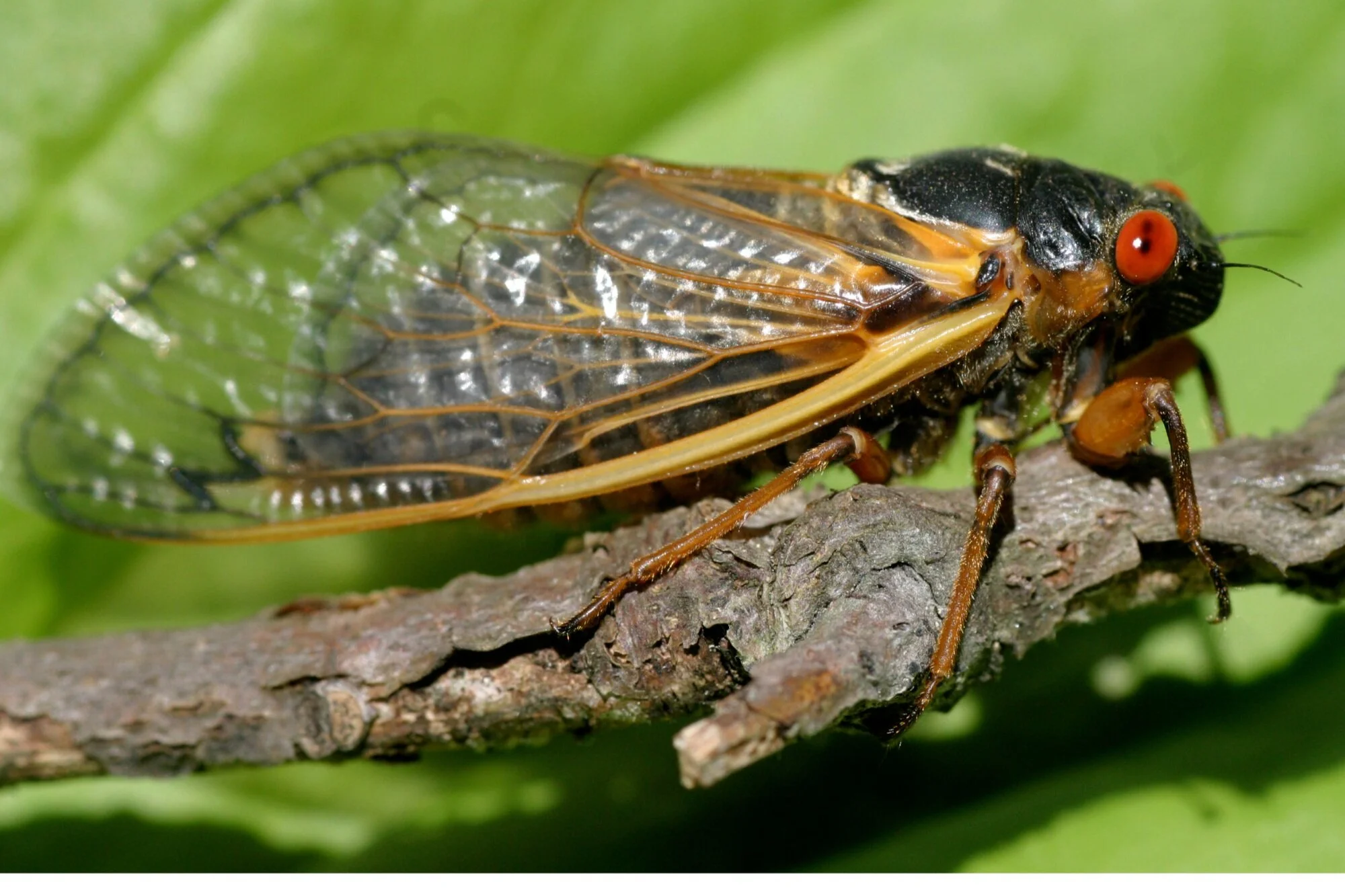What bug is in the same family as stink bugs and bedbugs and will be seen in our area in the millions in May?
If you guessed the cicada you’re right! Read on to find out where and when you can see this emergence and what it means for your trees and property.
Cicadas are large flying insects that spend most of their lives underground. You’ve probably seen or heard cicadas before, the males emit a loud humming or buzzing noise to attract females. They have an interesting life cycle as once they are hatched they spend up to 17 years underground feeding on roots before emerging to live for about a month mating before dying off. A small number of cicadas emerge each year but a massive number of periodical cicadas all come up out of the ground at once every 13-17 years. If you’re wondering what it looks like when thousands or even millions of cicadas emerge at the same time, you don’t have long to wait to find out, as it will most likely be happening in our area in late May. Previous broods have emerged when the soil temperature is at least 64 degrees F and after a soaking rain.
There’s good news and bad news on the effect that cicadas can have on people and the environment. The good news is that they do not sting or bite and they don’t carry diseases! In addition the nymphs construct tunnels underground that help to aerate the soil which actually helps tree roots get more nutrients and oxygen. They act like little roto-tillers and turn over soil when they emerge from the ground, and their decaying bodies nourish the soil. As if that weren’t enough, their egg-laying in trees sometimes results in increased numbers of fruits in the succeeding years. They are not pests and do not need to be eliminated. In fact, pesticides are ineffective against periodical cicadas.
The little bit of bad news is that egg laying in young trees can harm the trees. If you have a young tree/sapling, normally wrapping the tree can prevent egg laying.
During their 13 to 17 years underground, they feed on the juices and saps of tree roots, but unlike grubs, don’t touch the grass roots so won’t harm your lawn. Once they have emerged they may feed on plant juices including trees, but the damage is minimal and NOTHING like the damage from the highly destructive Spotted Lanternfly.
If you have any questions about the periodical cicadas or are planning to plant some trees this spring, give us a call and we can safeguard your young trees from the cicadas.



